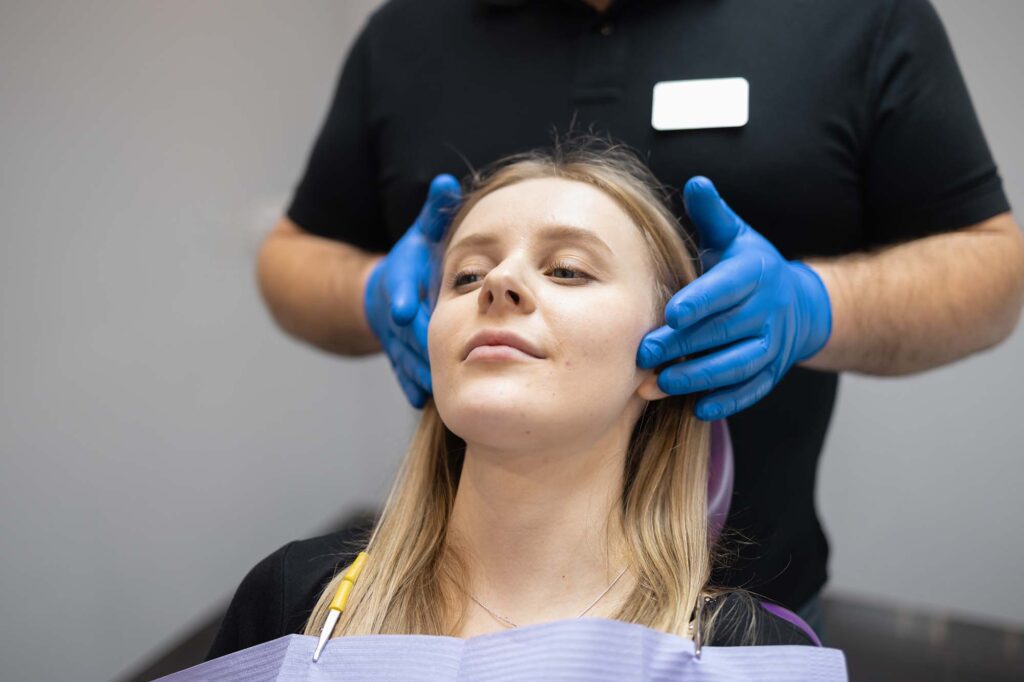TMD vs. TMJ Explained | Understanding Jaw Pain and Disorders
Navigating the world of jaw health can often feel like a complex puzzle, especially when it comes to understanding terms like TMJ and TMD. Here at The Orthospaceship, we’re dedicated to shedding light on these topics in a way that’s both informative and relatable. TMJ, standing for the temporomandibular joint, refers to the mechanics of your jaw joint – a critical component of how we talk, chew, and express ourselves. On the other hand, TMD, or temporomandibular disorders, encompasses a range of conditions affecting the smooth functioning of these vital joints. In this friendly guide, we’ll explore the distinctions between TMJ and TMD, aiming to provide clarity and comfort to those experiencing jaw joint discomfort, pain in the jaw muscles, or even chronic facial pain linked to these conditions. Let’s embark on this journey of understanding together, empowering you with knowledge for better oral health.
TMJ: The Mechanics of the Jaw Joint
The temporomandibular joint, or TMJ, refers to the hinge-like joint connecting your lower jaw to the temporal skull bone. This complex joint is vital for the movement of the jaw – enabling actions like chewing and speaking. When discussing TMJ, we’re referring to the anatomical structure itself, which includes the bones, muscles, and connective tissue covering that allow for the movement and function of the jaw.

TMD: When TMJ Function Goes Awry
TMD encompasses a group of conditions affecting the temporomandibular joints, the jaw muscles, and the nerves associated with chronic facial pain. Unlike TMJ, which refers to the joint itself, TMD is used to describe a dysfunction or disorder within these joints. Symptoms of TMD can include jaw pain, difficulty in jaw movement, and a clicking or locking sensation in the jaw joints.

TMJ vs TMD: Identifying the Differences
The distinction between TMJ and TMD lies in understanding that TMJ refers to the physical joint, whereas TMD refers to a range of potential disorders affecting this joint. TMJ disorders can lead to symptoms like pain in the jaw joint disks, discomfort in the jaw muscles, and even extend to chronic facial pain or headaches. Recognizing these differences is crucial for accurate diagnosis and treatment.
Common Misunderstandings About TMJ and TMD
A common misunderstanding is that TMJ and TMD are interchangeable. However, using them correctly can lead to better understanding and communication with healthcare providers. For instance, TMJ might be mentioned when discussing the jaw joint’s structure or movement, while TMD would be used when talking about conditions or symptoms affecting the jaw, such as difficulty in moving the jaw or pain in the jaw joint disks. So if you’re searching phrases like ‘TMJ vs normal jaw,’ you may actually be asking how a healthy jaw differs from one with issues – TMJ refers to the jaw joint itself, while TMD describes disorders causing pain or restricted movement.

Common Causes and Symptoms
Common causes of TMD include teeth grinding, clenching, and physical stress on the jaw joints and muscles. This can lead to symptoms such as jaw locking, jaw clicking, and even ear canal discomfort. TMJ dysfunction, on the other hand, might manifest as pain in the jaw joint or challenges in controlling jaw movement. Learn more about causes and symptoms of TMD.

Treatment and Management
Treatment for TMJ dysfunction and TMD can vary. It often includes physical therapy to improve jaw movement and relieve pain. Management techniques such as relaxation techniques, avoiding teeth grinding, and eating soft foods can also alleviate symptoms. For ongoing pain or more severe cases, consulting a healthcare provider for options like prescription medications or muscle relaxants can be beneficial. Learn more about treatment options for TMJ disorders.
At The Orthospaceship, we are dedicated to providing clear information and comprehensive care for all aspects of oral health, including the intricacies of TMJ and TMD. If you’re experiencing symptoms that affect your jaw joint or facial muscles, we are here to help with expert diagnosis and personalized treatment plans. Contact us to schedule a free consultation and take the first step towards alleviating jaw pain and improving your oral health.
